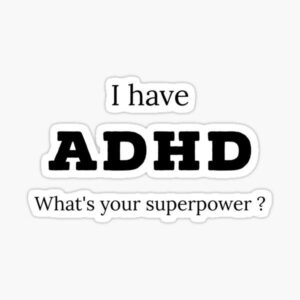Today, I want to share my personal experience of living with auditory dyslexia—a condition that is rarely talked about but can significantly impact the quality of life.
What is Auditory Dyslexia?
In professional circles, it is known as Central Auditory Processing Disorder (CAPD). This condition makes it difficult for a person to perceive and process auditory information. Even if their hearing is perfectly normal, their brain struggles to interpret and retain what they hear. Simply put, you hear sounds, but you can’t always tell where they’re coming from. Someone speaks to you, and you catch the words, but they don’t fully register.
My Experience with Auditory Dyslexia
I first became aware of my auditory dyslexia when I pursued my second degree. I noticed how incredibly hard it was to focus during lectures. Sitting in class, I was constantly battling myself to pay attention to the speaker. My brain would do anything to escape—suddenly remembering urgent tasks, itching to get up, craving any activity that didn’t involve just sitting there and listening.
My attention would jump from one thought to another, turning every lecture into an exhausting mental struggle. It wasn’t just distraction—it was an actual inability to process auditory information properly. It felt like all my energy was spent just trying to stay in my seat and grasp even a fraction of what was being said.
Understanding the Science Behind It
As someone who relies on a scientific approach, I wanted to understand the nature of auditory dyslexia—not just out of curiosity, but to find a solution. From a neurobiological perspective, auditory dyslexia can be linked to delays in signal transmission between different brain regions, atypical neural network organization, difficulties retaining auditory information in short-term memory, imbalances in brain chemistry, and functional differences between the left and right hemispheres.
Finding Ways to Cope
To manage this challenge, I started experimenting with different techniques. As a researcher in psychology and neurobiology, I looked for strategies that could actually help.
One of the most effective turned out to be meditation. It helped me reduce the anxiety that often accompanied my struggles. I would sit down, breathe, scan my body for tension, and gently tap or focus on any discomfort, connecting with it on the inhale and releasing it on the exhale.
I also discovered that repetitive hand movements helped me focus. I bought a fabric shaver and started using it during lectures. While listening, I would hold a sweater and slowly remove lint, which calmed me and allowed me to concentrate better. Sometimes, I would pause to jot down key thoughts that I had finally managed to grasp.
Another game-changer was motor skill toys, which turned out to be powerful tools for concentration. Keeping my hands busy reduced inner tension and helped me stay focused on auditory input.
A more advanced but incredibly effective method for me was PEMF therapy (Pulsed Electromagnetic Field therapy). This approach uses electromagnetic pulses to stimulate brain cells, improving their function and supporting neural recovery—essentially physiotherapy for the brain. Combined with cognitive exercises, PEMF significantly eased my symptoms.
The Power of Communication
One of the simplest yet most effective strategies was talking openly about it. I learned to communicate my needs, even in professional settings, and ask questions. Sometimes, during business meetings, I hear and understand the beginning of a sentence, but by the end, the words seem to float somewhere out of reach. Instead of pretending I understood, I started explaining that I didn’t quite catch the last part and asking people to repeat it. Interestingly, when I repeated the part I did hear, my conversation partners often rephrased their thoughts more clearly—sometimes even improving their own ideas in the process.
Embracing Neuroplasticity
Our brains have a remarkable ability to adapt and form new neural connections. When we engage in repetitive actions or use sensory-motor tools, we activate neural pathways that help filter distractions and improve auditory focus. This explains why my strategies, aimed at enhancing neuroplasticity, worked so well.
Final Thoughts
Auditory dyslexia is a challenge, but it’s one that can be managed with the right techniques. You can train your brain. My personal experience shows that even simple practices like meditation and repetitive hand movements can make a significant difference in auditory processing.
I hope my story helps those facing similar difficulties. If you or someone close to you struggles with auditory perception, don’t be afraid to explore, experiment, and find what works best for you.
I’d like to end with a quote from the American poet Adrienne Rich:
«I came to see that strength came from those wounds that had once given me pain.»
Contact me if you have any questions.




